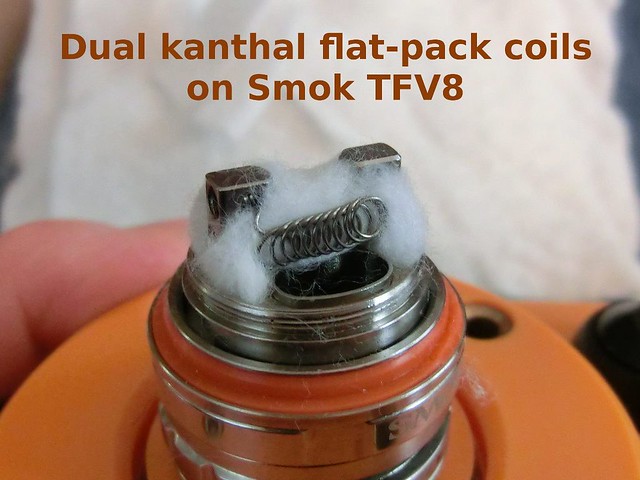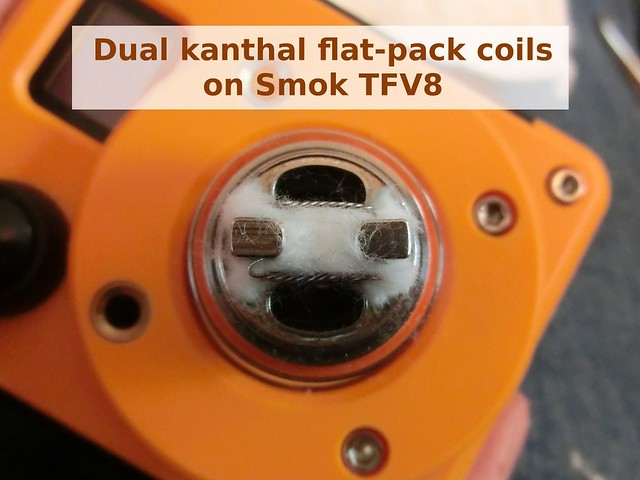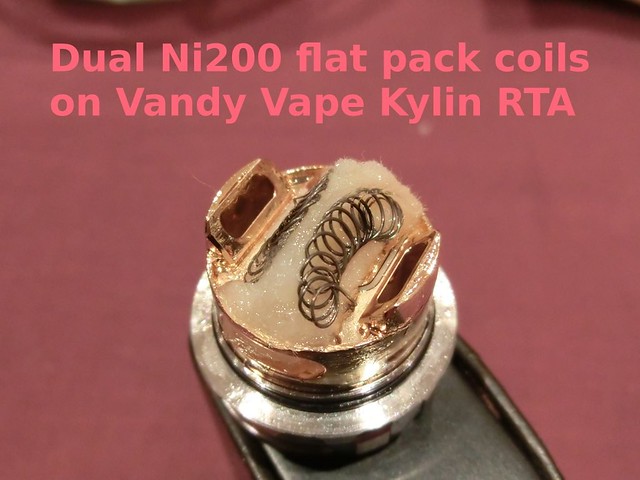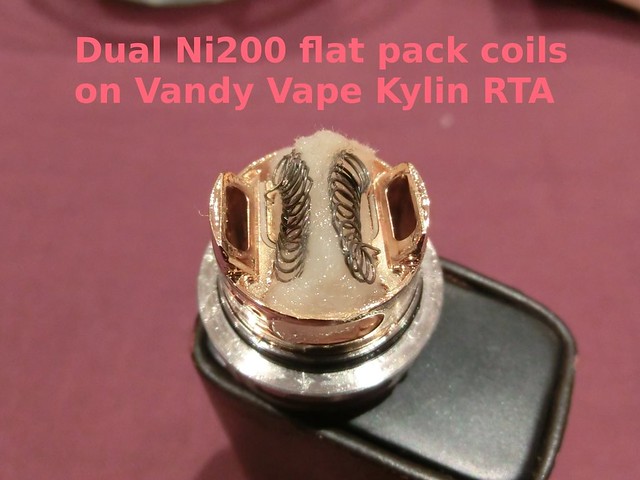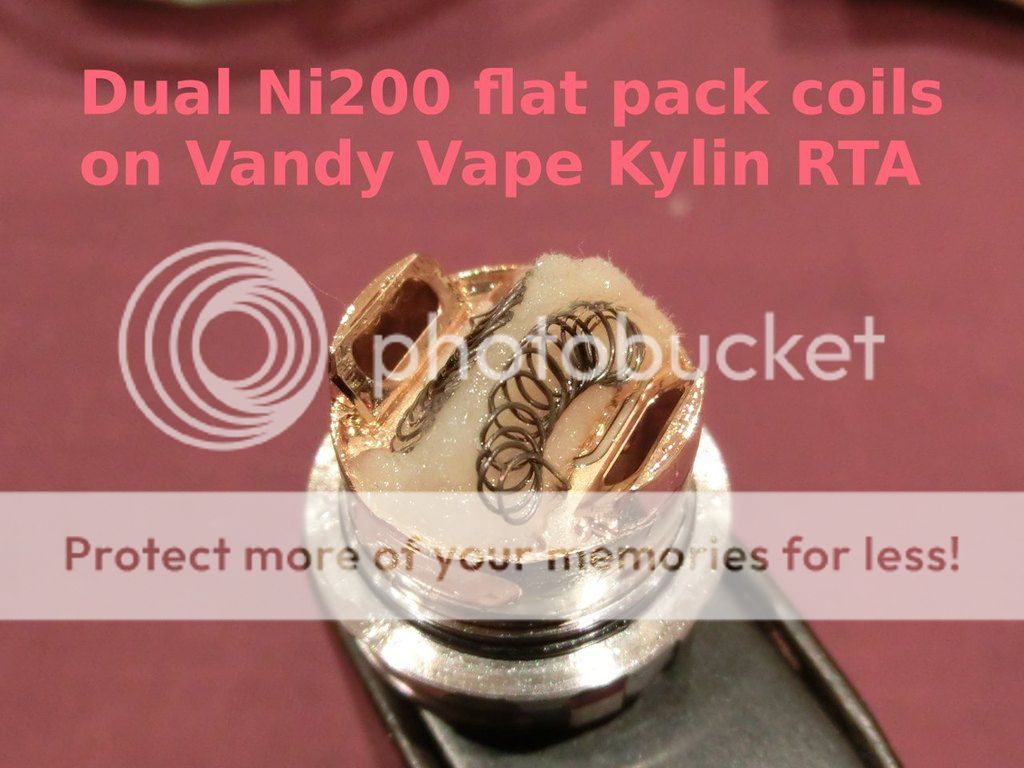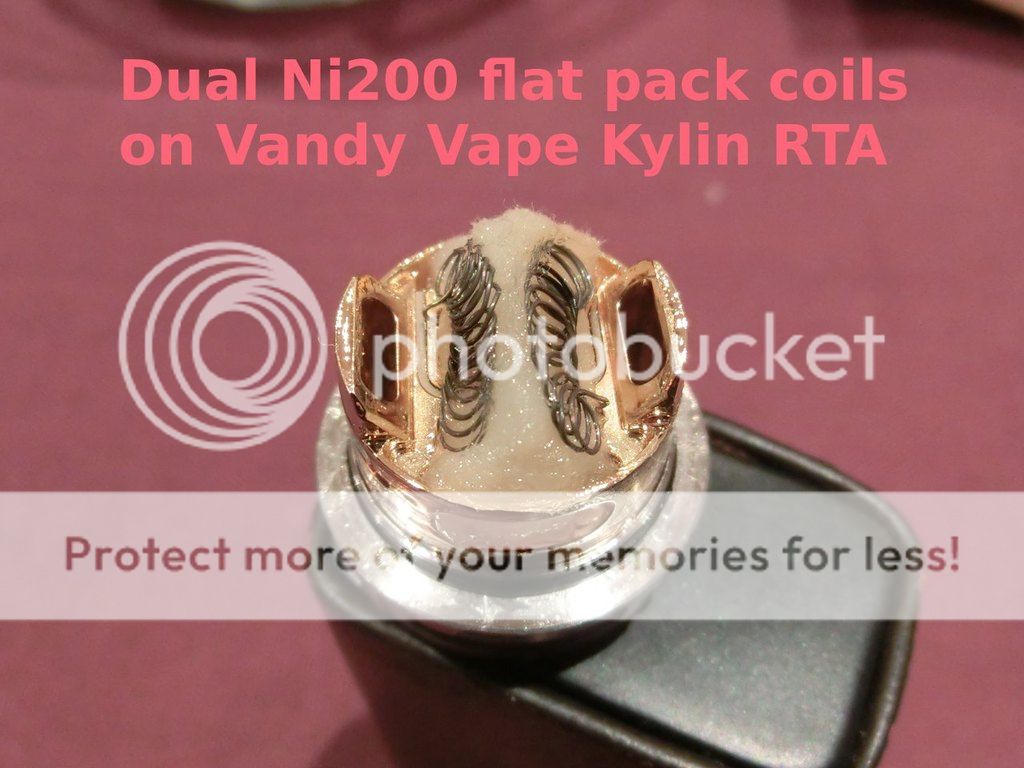Hello everybody,
About 2 years ago, I discovered the best coiling / wicking method ever for TC with Ni200. Seriously! Well, it works very well with other types of wire too, but it's harder to do. It works great with Ni200 because it's very soft. I call the coils "flat-pack coils" because the coils are flat, and the wicks need to be unusually well packed.
Having been away from the forum for a long time, I thought the method was common knowledge - since it's so simple. But my local vaping buddies keep telling me they never saw anything like it. So I checked around, and I can't seem to find anyone who does it too. So I figured I'd share. Here goes:
First of all, the "coils" aren't really coils. They start out as regular 2.5mm I.D., 28-gauge, 12-wrap Ni200 coils with a 1mm spacing between the wraps. Then I flatten the coils between my thumb and my index finger, with the legs pointing inward or outward depending on the distance between the atomizer posts, and flatten them further gently with a pair of pliers. They end up looking like this:
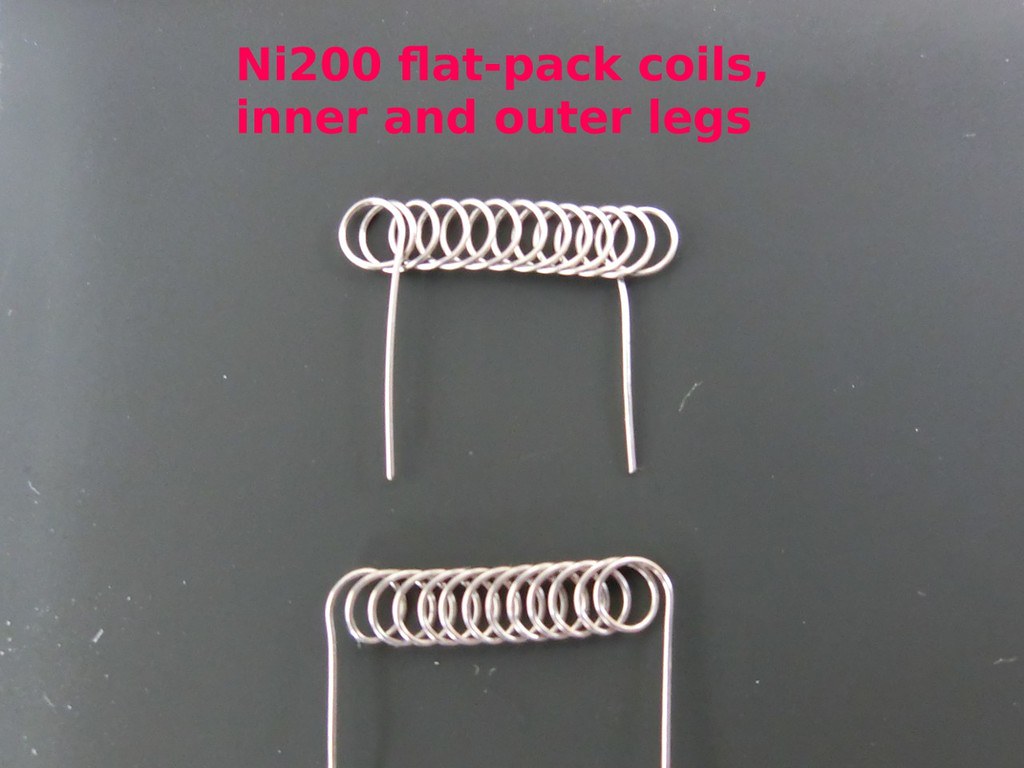
I mount them on the atomizer in such a way that I can pack the cotton tightly between the coils and something solid, like the bottom of the deck for atomizers with top airflow, or the post blocks on atomizers with bottom airflow.
Then I gently dry-burn them - gently because at first, only a few loops will fire, the others being shorted. I dry-burn them until all the loops light up properly.
For the wicking, it's rather counter-intuitive compared to round coils: I cut a length of cotton about the width of the coils, and fold it over 2 or 3 times into tight wads. Then I lift the coils gently, slide the wads underneath, then push the coils back onto them.
The coils should be pressed rather hard onto the wads to pack them even tighter: ideally, the cotton should be packed tight enough that the coils rest flat on the wads after pressing the coil firmly against them with a finger. The more cotton, the tighter packed the wads, the better.
Here's what my coils look like on various atomizers. Sorry, some of them are pretty dirty, but at least they show that I really do use them
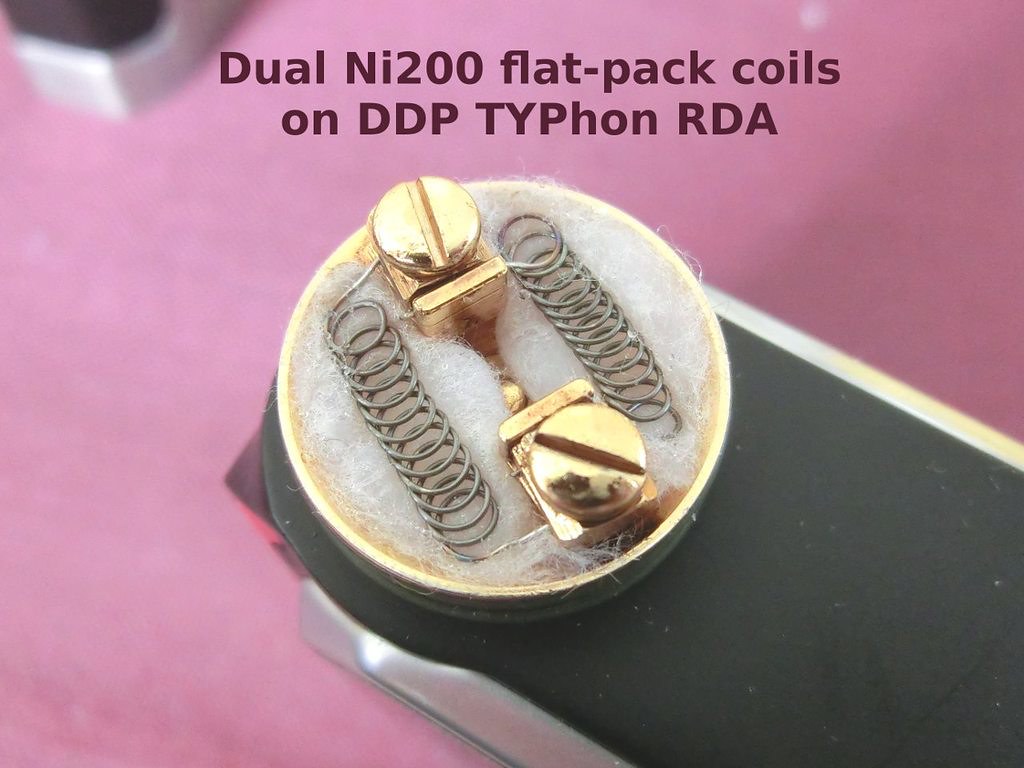
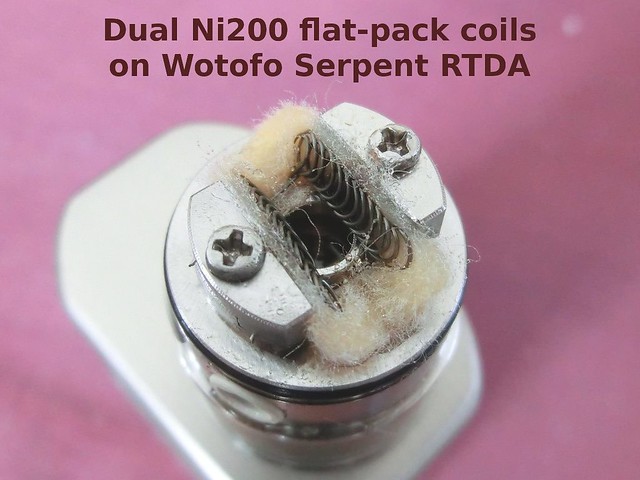
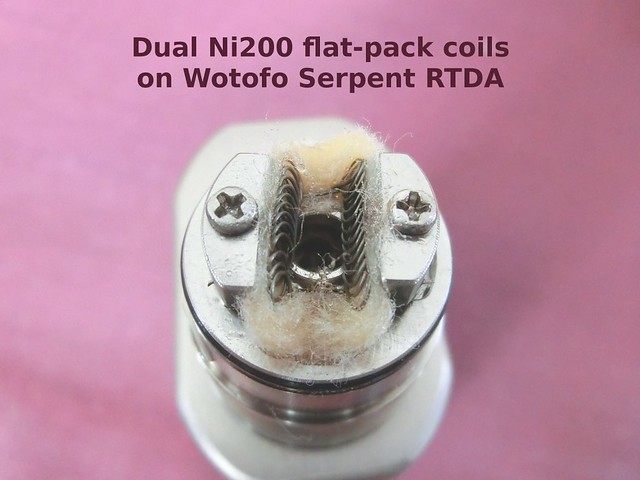
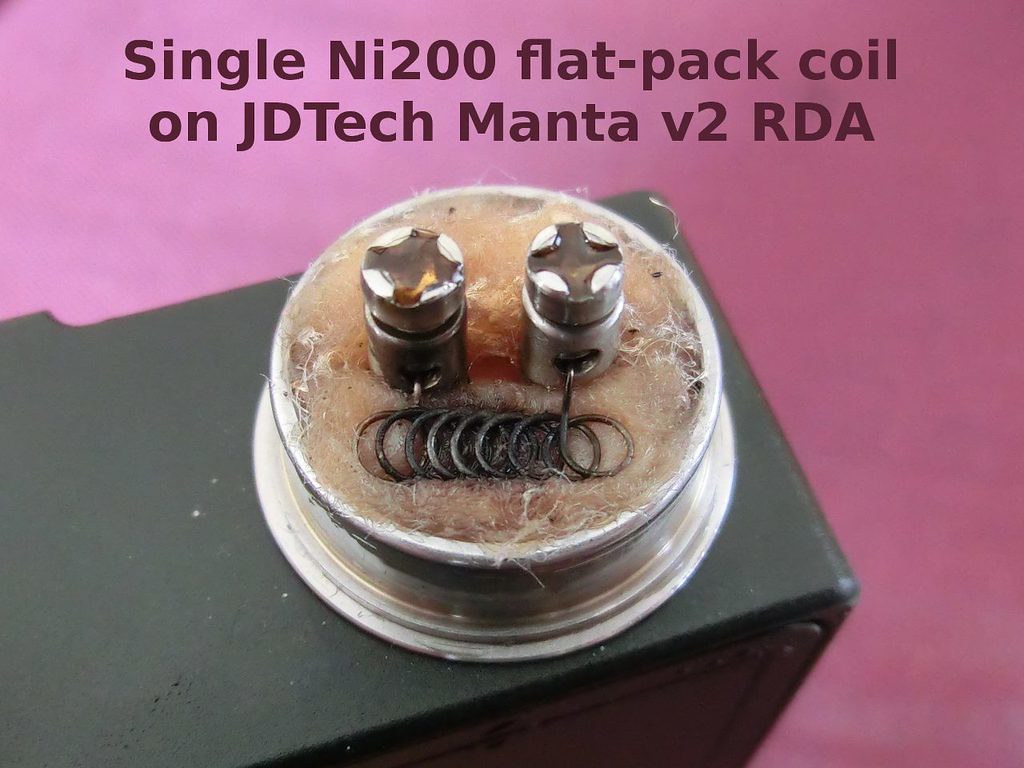
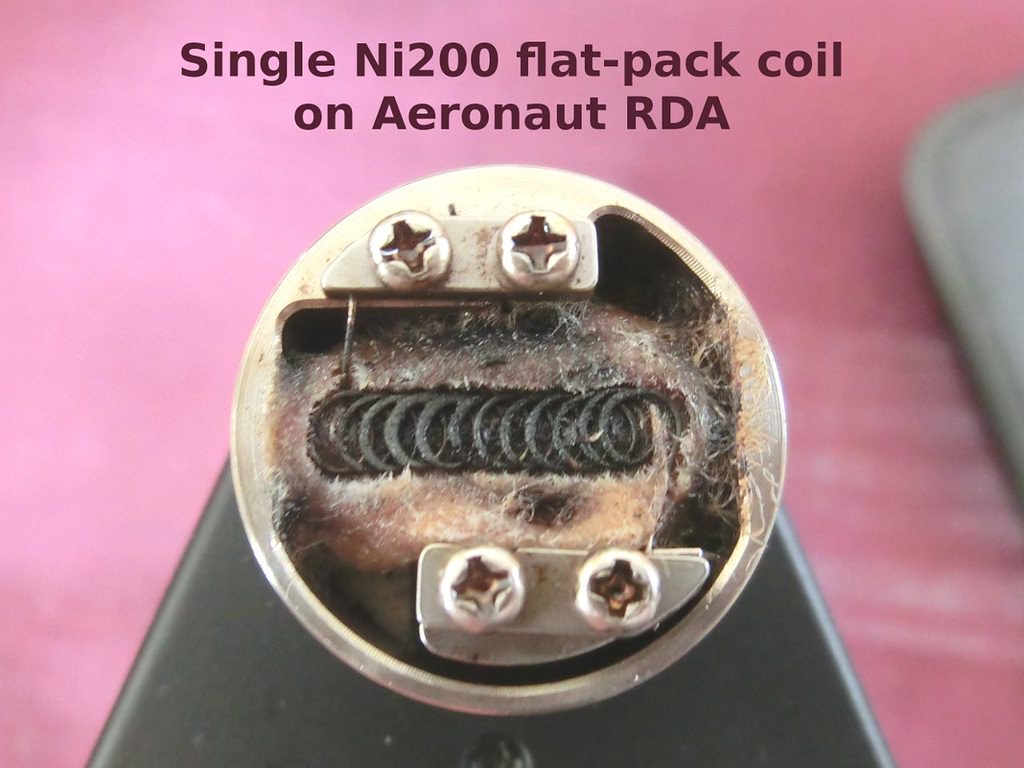
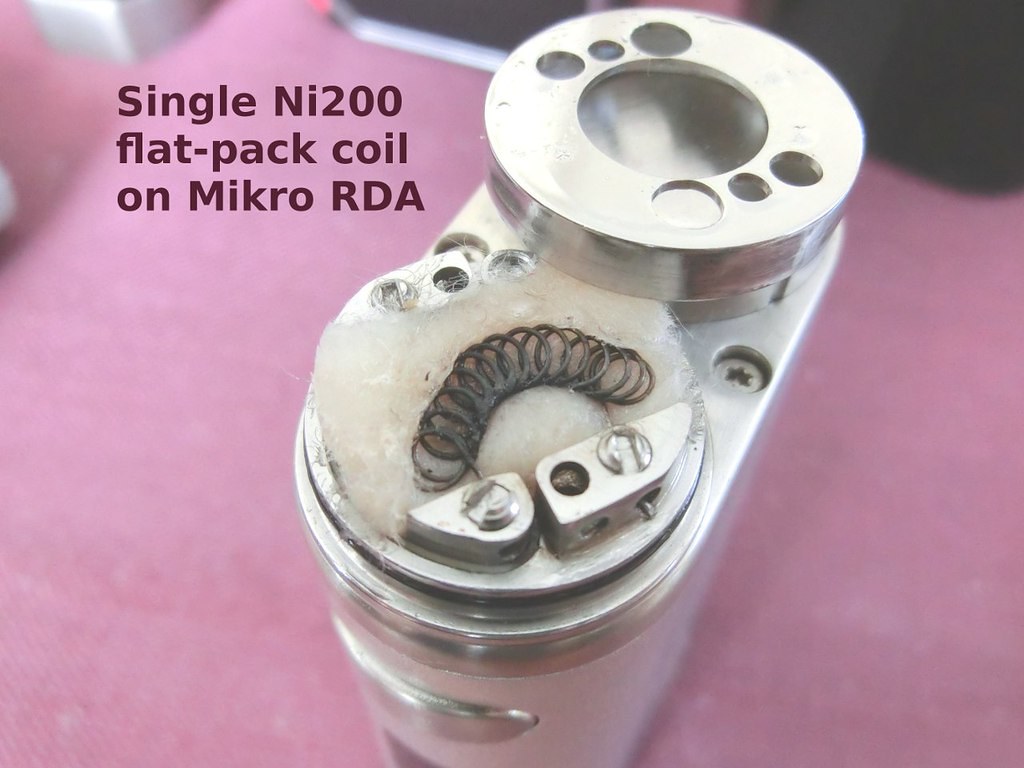
Once they're in place, regardless of the type of atomizer I use, with these particular coils, single coils invariably end up between 0.17Ω and 0.20Ω, and dual-coils between 0.08Ω and 0.10Ω. As for the settings, 480F-500F work perfectly with all my mods, and 35-40W for single coils to 50-60W for dual-coils.
So, what's so great about flat-pack coils you ask?
1/ No dry-hit, ever. If you get a dry hit, you haven't packed the cotton tightly enough. In that case, open the bell, press the coils further into the cotton with your finger and it's gone.
2/ Very predictable TC.
3/ The wads of cotton last forever, and the coils need much less cleaning. I can go 15 days between cleanups. When it's time to dry-burn and re-wick, there's just a drop in vapor production: no funny taste, no dry-hit, nothing nasty.
4/ Re-wicking is very easy: simply lift the coils gently with a small screwdriver, remove the wads of cotton, dry-burn the coils in water until they're clean, insert fresh wads of cotton, fold the coils back and voila.
I urge you to try flat-pack coils: they're well worth it!
About 2 years ago, I discovered the best coiling / wicking method ever for TC with Ni200. Seriously! Well, it works very well with other types of wire too, but it's harder to do. It works great with Ni200 because it's very soft. I call the coils "flat-pack coils" because the coils are flat, and the wicks need to be unusually well packed.
Having been away from the forum for a long time, I thought the method was common knowledge - since it's so simple. But my local vaping buddies keep telling me they never saw anything like it. So I checked around, and I can't seem to find anyone who does it too. So I figured I'd share. Here goes:
First of all, the "coils" aren't really coils. They start out as regular 2.5mm I.D., 28-gauge, 12-wrap Ni200 coils with a 1mm spacing between the wraps. Then I flatten the coils between my thumb and my index finger, with the legs pointing inward or outward depending on the distance between the atomizer posts, and flatten them further gently with a pair of pliers. They end up looking like this:

I mount them on the atomizer in such a way that I can pack the cotton tightly between the coils and something solid, like the bottom of the deck for atomizers with top airflow, or the post blocks on atomizers with bottom airflow.
Then I gently dry-burn them - gently because at first, only a few loops will fire, the others being shorted. I dry-burn them until all the loops light up properly.
For the wicking, it's rather counter-intuitive compared to round coils: I cut a length of cotton about the width of the coils, and fold it over 2 or 3 times into tight wads. Then I lift the coils gently, slide the wads underneath, then push the coils back onto them.
The coils should be pressed rather hard onto the wads to pack them even tighter: ideally, the cotton should be packed tight enough that the coils rest flat on the wads after pressing the coil firmly against them with a finger. The more cotton, the tighter packed the wads, the better.
Here's what my coils look like on various atomizers. Sorry, some of them are pretty dirty, but at least they show that I really do use them






Once they're in place, regardless of the type of atomizer I use, with these particular coils, single coils invariably end up between 0.17Ω and 0.20Ω, and dual-coils between 0.08Ω and 0.10Ω. As for the settings, 480F-500F work perfectly with all my mods, and 35-40W for single coils to 50-60W for dual-coils.
So, what's so great about flat-pack coils you ask?
1/ No dry-hit, ever. If you get a dry hit, you haven't packed the cotton tightly enough. In that case, open the bell, press the coils further into the cotton with your finger and it's gone.
2/ Very predictable TC.
3/ The wads of cotton last forever, and the coils need much less cleaning. I can go 15 days between cleanups. When it's time to dry-burn and re-wick, there's just a drop in vapor production: no funny taste, no dry-hit, nothing nasty.
4/ Re-wicking is very easy: simply lift the coils gently with a small screwdriver, remove the wads of cotton, dry-burn the coils in water until they're clean, insert fresh wads of cotton, fold the coils back and voila.
I urge you to try flat-pack coils: they're well worth it!
Last edited:

